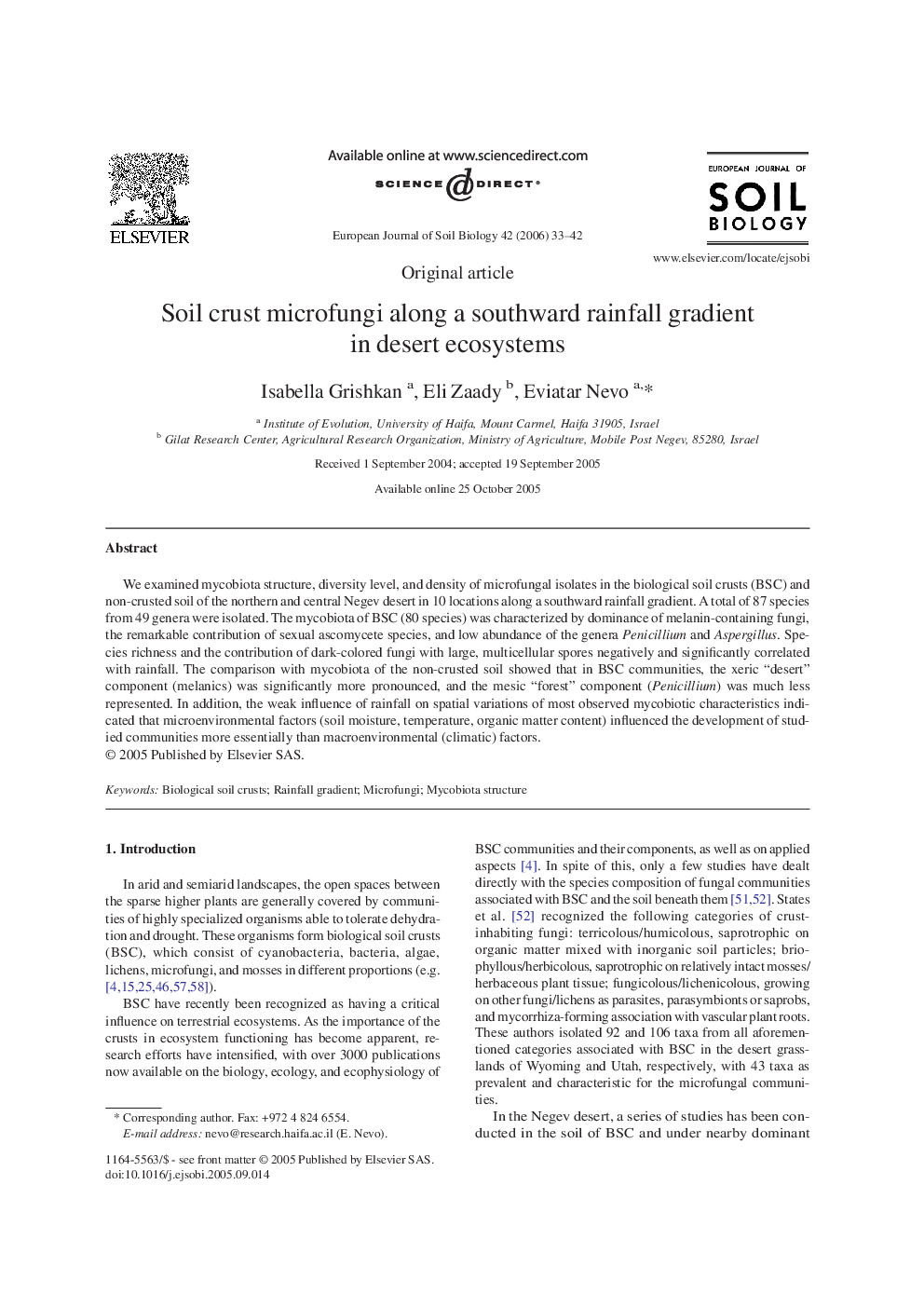| Article ID | Journal | Published Year | Pages | File Type |
|---|---|---|---|---|
| 4392578 | European Journal of Soil Biology | 2006 | 10 Pages |
We examined mycobiota structure, diversity level, and density of microfungal isolates in the biological soil crusts (BSC) and non-crusted soil of the northern and central Negev desert in 10 locations along a southward rainfall gradient. A total of 87 species from 49 genera were isolated. The mycobiota of BSC (80 species) was characterized by dominance of melanin-containing fungi, the remarkable contribution of sexual ascomycete species, and low abundance of the genera Penicillium and Aspergillus. Species richness and the contribution of dark-colored fungi with large, multicellular spores negatively and significantly correlated with rainfall. The comparison with mycobiota of the non-crusted soil showed that in BSC communities, the xeric “desert” component (melanics) was significantly more pronounced, and the mesic “forest” component (Penicillium) was much less represented. In addition, the weak influence of rainfall on spatial variations of most observed mycobiotic characteristics indicated that microenvironmental factors (soil moisture, temperature, organic matter content) influenced the development of studied communities more essentially than macroenvironmental (climatic) factors.
